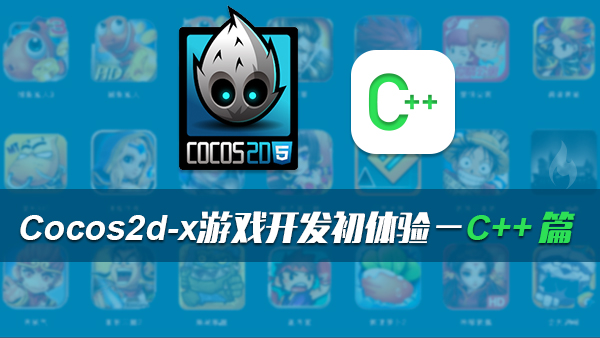本文深入介绍了C++字符串的基础知识,包括std::string和字符数组的使用方法以及它们之间的区别。文章还详细讲解了字符串的初始化、常用操作函数、拼接与分割、查找与替换,以及输入与输出等技巧。通过丰富的代码示例,读者可以更好地理解和掌握C++字符串的处理方法。文中提供了C++字符串资料,帮助读者避免常见错误并提高编程效率。
C++字符串基础知识介绍
字符串的基本概念
在编程中,字符串是一种数据类型,用于表示一系列字符的序列。字符串通常包含字母、数字、符号等字符,可以用来表示文字、标识符、数据记录等。
字符串在C++中的表示方法
在C++中,字符串有两种主要的表示方法:std::string 和字符数组(以空字符结尾的字符数组)。
std::string:std::string是C++标准库中的一个类,提供了丰富的字符串操作功能。它可以动态调整大小,方便地进行字符串操作。- 字符数组:字符数组是通过声明一个字符类型(如
char)的数组来表示字符串。它需要在数组的结尾放置一个空字符(\0)来表示字符串的结束。
C++字符串与字符数组的区别
- 动态性:
std::string是动态的,可以自动调整大小,而字符数组的大小在声明时固定。 - 功能:
std::string提供了丰富的成员函数,方便进行字符串操作,而字符数组需要通过手动实现这些功能。 - 内存管理:
std::string会自动管理内存,字符数组需要手动管理内存。
使用std::string处理字符串
std::string的基本用法
std::string 是C++标准库中的一个类,提供了许多方便的字符串操作方法。以下是一些基本用法:
#include <iostream>
#include <string>
int main() {
std::string str = "Hello, world!";
std::cout << str << std::endl;
return 0;
}如何初始化std::string
std::string 可以通过多种方式初始化:
- 通过字符串字面量
- 通过字符数组
- 通过其他
std::string对象
#include <iostream>
#include <string>
int main() {
std::string str1 = "Hello, world!"; // 通过字符串字面量
std::string str2 = "C++"; // 通过字符串字面量
std::string str3 = str1; // 通过其他 std::string 对象
std::string str4(10, 'a'); // 通过指定长度和填充字符
std::cout << str1 << std::endl;
std::cout << str2 << std::endl;
std::cout << str3 << std::endl;
std::cout << str4 << std::endl;
return 0;
}常用字符串操作函数
std::string 提供了许多常用的操作函数,例如:
length()或size():获取字符串的长度empty():检查字符串是否为空operator[]:访问字符串中的字符substr():获取子字符串find():查找子字符串的位置append():追加字符串compare():比较两个字符串
#include <iostream>
#include <string>
int main() {
std::string str1 = "Hello, world!";
std::cout << "Length: " << str1.length() << std::endl; // 13
std::cout << "Is empty: " << str1.empty() << std::endl; // 0
char ch = str1[0];
std::cout << "First character: " << ch << std::endl; // H
std::string sub = str1.substr(7, 5); // "world"
std::cout << "Substr: " << sub << std::endl;
size_t pos = str1.find("world");
std::cout << "Position of 'world': " << pos << std::endl; // 7
str1.append(", C++");
std::cout << "Appended: " << str1 << std::endl; // Hello, world!, C++
std::string str2 = "Hello";
int cmp_result = str1.compare(str2);
std::cout << "Comparison result: " << cmp_result << std::endl; // 1
return 0;
}字符串的拼接与分割
字符串拼接方法
字符串拼接可以通过 + 运算符或 append() 方法实现。
#include <iostream>
#include <string>
int main() {
std::string str1 = "Hello, ";
std::string str2 = "world!";
std::string result = str1 + str2;
std::cout << result << std::endl; // Hello, world!
str1.append(", C++");
std::cout << str1 << std::endl; // Hello, world!, C++
return 0;
}字符串分割方法
字符串分割可以通过 find() 方法和循环实现,也可以使用 std::getline() 函数处理多个字符串。
#include <iostream>
#include <string>
int main() {
std::string str = "Hello,world,C++";
std::string delimiter = ",";
size_t pos = 0;
std::string token;
while ((pos = str.find(delimiter)) != std::string::npos) {
token = str.substr(0, pos);
std::cout << token << std::endl;
str.erase(0, pos + delimiter.length());
}
std::cout << str << std::endl; // C++
return 0;
}实例演示字符串拼接与分割
以下是一个完整的示例,演示如何进行字符串的拼接和分割。
#include <iostream>
#include <string>
int main() {
std::string str1 = "Hello, ";
std::string str2 = "world!";
std::string str3 = "C++";
std::string result;
result = str1 + str2 + ", " + str3;
std::cout << "Concatenated string: " << result << std::endl; // Hello, world!, C++
std::string delimiter = ",";
size_t pos = 0;
std::string token;
while ((pos = result.find(delimiter)) != std::string::npos) {
token = result.substr(0, pos);
std::cout << token << std::endl;
result.erase(0, pos + delimiter.length());
}
std::cout << result << std::endl; // C++
return 0;
}字符串的查找与替换
查找子字符串
使用 std::string 的 find() 方法可以查找子字符串的位置。
#include <iostream>
#include <string>
int main() {
std::string str = "Hello, world!";
size_t pos = str.find("world");
if (pos != std::string::npos) {
std::cout << "Substring 'world' found at position: " << pos << std::endl; // 7
} else {
std::cout << "Substring 'world' not found" << std::endl;
}
return 0;
}替换子字符串
使用 std::string 的 replace() 方法可以替换子字符串。
#include <iostream>
#include <string>
int main() {
std::string str = "Hello, world!";
std::string old_str = "world";
std::string new_str = "C++";
size_t pos = str.find(old_str);
if (pos != std::string::npos) {
str.replace(pos, old_str.length(), new_str);
std::cout << "Replaced string: " << str << std::endl; // Hello, C++
} else {
std::cout << "Substring '" << old_str << "' not found" << std::endl;
}
return 0;
}查找与替换综合示例
以下是一个完整的示例,展示如何结合查找和替换操作。
#include <iostream>
#include <string>
int main() {
std::string str = "Hello, world!";
size_t pos = str.find("world");
if (pos != std::string::npos) {
std::cout << "Substring 'world' found at position: " << pos << std::endl; // 7
str.replace(pos, 5, "C++");
std::cout << "Replaced string: " << str << std::endl; // Hello, C++
} else {
std::cout << "Substring 'world' not found" << std::endl;
}
return 0;
}字符串的输入与输出
使用std::cin和std::cout
std::cin 用于从标准输入读取字符串,std::cout 用于输出字符串。
#include <iostream>
#include <string>
int main() {
std::string str;
std::cout << "Enter a string: ";
std::cin >> str; // 读取一个单词
std::cout << "You entered: " << str << std::endl;
std::cout << "Enter another string: ";
std::getline(std::cin, str); // 读取一行
std::cout << "You entered: " << str << std::endl;
return 0;
}格式化输入输出
使用 std::cout 的格式化输出可以控制输出格式。
#include <iostream>
#include <string>
int main() {
std::string str = "Hello, world!";
std::cout << "Original: " << str << std::endl;
std::cout << "Left-padded: " << std::setw(20) << std::left << str << std::endl;
std::cout << "Right-padded: " << std::setw(20) << std::right << str << std::endl;
return 0;
}示例代码展示
以下是一个完整的示例,演示如何读取字符串并进行格式化输出。
#include <iostream>
#include <string>
int main() {
std::string str;
std::cout << "Enter a string: ";
std::cin >> str;
std::cout << "You entered: " << str << std::endl;
std::cout << "Left-padded: " << std::setw(20) << std::left << str << std::endl;
std::cout << "Right-padded: " << std::setw(20) << std::right << str << std::endl;
return 0;
}常见错误及调试技巧
常见错误类型
在处理字符串时,容易遇到以下常见错误:
- 内存访问越界:访问超出字符串范围的字符。
- 空指针异常:使用空指针进行字符串操作。
- 字符串拼接错误:使用
+运算符拼接字符串时,忘记转义字符。 - 格式化错误:使用格式化输出时,格式字符串不正确。
调试技巧
- 使用断点:设置断点在代码中可能出错的地方,逐步执行代码。
- 打印变量值:在关键位置打印变量值,检查是否符合预期。
- 使用调试工具:使用IDE提供的调试工具,如Visual Studio Code等。
- 单元测试:编写单元测试,确保每个函数的正确性。
如何避免常见错误
- 使用
std::string类:std::string提供了丰富的功能,避免手动管理内存。 - 检查字符串边界:在访问字符串时,检查索引是否在有效范围内。
- 使用
std::getline():使用std::getline()读取整行字符串,避免读取到空格。 - 注意字符串格式:在使用格式化输出时,确保格式字符串正确。
以下是一个完整的示例,展示如何避免常见错误并进行调试:
#include <iostream>
#include <string>
int main() {
std::string str;
std::cout << "Enter a string: ";
std::getline(std::cin, str); // 使用 getline 读取整行
std::cout << "You entered: " << str << std::endl;
int length = str.length();
std::cout << "Length: " << length << std::endl;
if (length > 0) {
char first_char = str[0];
std::cout << "First character: " << first_char << std::endl;
} else {
std::cout << "String is empty" << std::endl;
}
return 0;
}通过上述代码示例,您可以更好地理解和掌握C++中的字符串处理技巧。希望这些示例和代码能够帮助您在实践中避免常见错误,并提高编程效率。

 随时随地看视频
随时随地看视频




